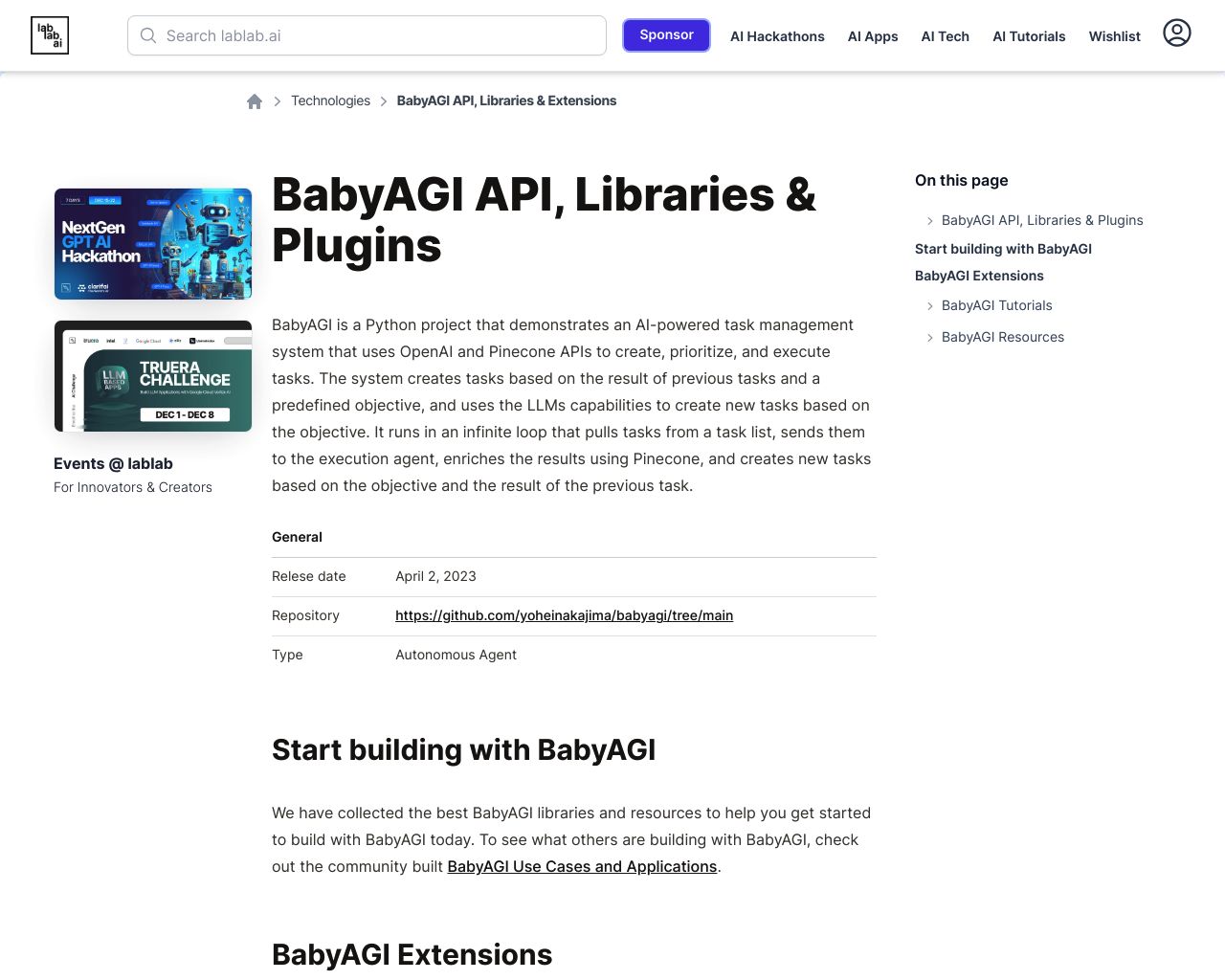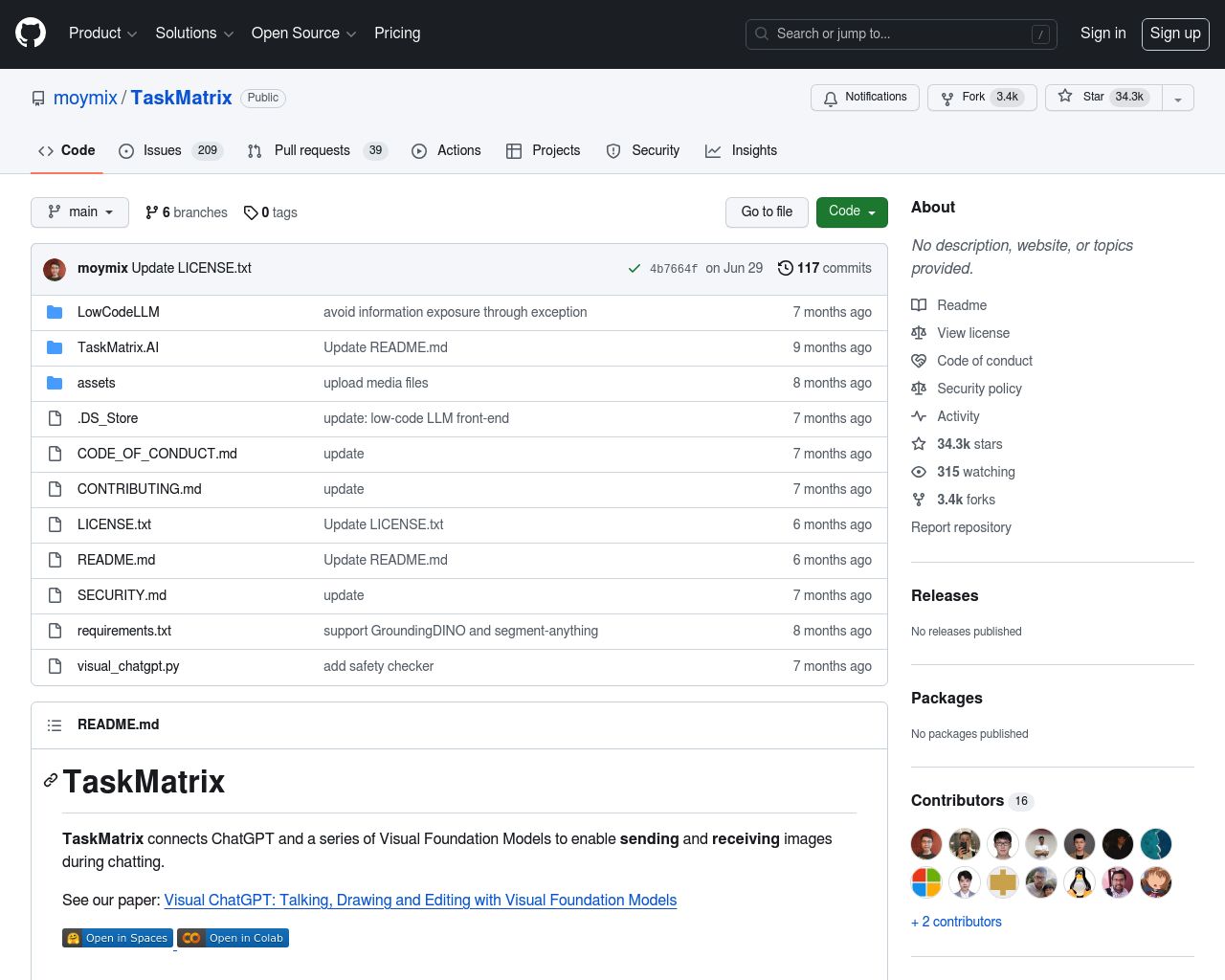BabyAGI vs TaskMatrix: A Comprehensive Comparison
Artificial intelligence revolutionizes task management and problem-solving, with platforms like BabyAGI and TaskMatrix leading the charge. BabyAGI simulates human-like cognitive processes for autonomous task generation and prioritization, while TaskMatrix integrates foundation models with specialized APIs for versatile task execution. This comparison explores their unique features, strengths, and limitations, contrasting them with SmythOS, a comprehensive AI development platform. We’ll examine how each system tackles complex challenges, their accessibility for different user groups, and their potential impact on various industries. Whether you’re a developer seeking powerful AI tools, a business leader exploring automation solutions, or an AI enthusiast curious about cutting-edge technologies, this analysis will help you navigate the evolving landscape of AI-driven task management and agent development.
BabyAGI Overview
BabyAGI revolutionizes task management through artificial intelligence. This open-source platform simulates human-like cognitive processes, enabling autonomous task generation, prioritization, and execution. Developed by Yohei Nakajima, BabyAGI represents a significant step towards artificial general intelligence (AGI).


BabyAGI excels in creating dynamic task lists based on predefined objectives. It continuously learns from previous tasks, adapting to new challenges much like a human would. The system leverages advanced natural language processing from OpenAI and vector databases like Pinecone for efficient task result storage and retrieval.
BabyAGI revolutionizes task management through artificial intelligence… simulates human-like cognitive processes, enabling autonomous task generation, prioritization, and execution.
Key features of BabyAGI include autonomous task generation, efficient prioritization, and integrated memory capabilities. These attributes allow it to improve over time, offering a personalized approach to task management. The platform’s problem-solving capabilities enable it to break down complex objectives into manageable tasks, execute them, and iterate based on results.
BabyAGI excels in creating dynamic task lists based on predefined objectives. It continuously learns from previous tasks, adapting to new challenges much like a human would.
While BabyAGI offers impressive autonomous capabilities, it lacks some features found in more comprehensive platforms. It doesn’t provide a visual builder or no-code editor, requiring users to have coding knowledge, particularly in Python. Additionally, BabyAGI doesn’t offer multi-agent collaboration or specific human-AI interaction mechanisms, focusing instead on single-agent task management.
Despite these limitations, BabyAGI’s innovative approach to AI-driven task management positions it as a valuable tool for developers and researchers exploring the frontiers of artificial general intelligence. Its ability to adapt, learn, and prioritize tasks autonomously makes it a compelling choice for those seeking to implement intelligent automation in various domains.
TaskMatrix Overview
TaskMatrix.AI stands at the forefront of AI innovation, offering a powerful ecosystem that enhances the capabilities of foundation models like GPT-4. Developed by Microsoft, this open-source platform seamlessly integrates specialized models through APIs, enabling a wide range of complex tasks.
At its core, TaskMatrix functions as an intelligent project manager, bridging diverse AI models to perform tasks efficiently. The system employs a conversational foundation model capable of understanding multimodal inputs, generating executable action codes, and leveraging a vast repository of APIs to execute tasks. This unique approach allows TaskMatrix to tackle both digital and physical challenges with remarkable versatility.
TaskMatrix functions as an intelligent project manager, bridging diverse AI models to perform tasks efficiently.


Key components of TaskMatrix include its API Platform, which provides consistent documentation for easy integration, and an API Selector that chooses the most suitable APIs based on user instructions. The Action Executor then carries out the generated codes using selected APIs, enabling a seamless workflow from user input to task completion.
TaskMatrix excels in its problem-solving capabilities, breaking down objectives into manageable tasks and iterating based on results.
TaskMatrix excels in its problem-solving capabilities, breaking down objectives into manageable tasks and iterating based on results. This approach allows it to address complex issues effectively across various domains such as office automation, robotics, and Internet of Things (IoT) applications. However, it’s worth noting that TaskMatrix primarily operates as a single autonomous agent, without explicit support for multi-agent collaboration or human-AI interaction features.
While TaskMatrix offers impressive capabilities in task execution and management, it lacks some features found in other platforms. It doesn’t provide a visual builder or no-code editor, which may limit accessibility for non-technical users. Additionally, there’s no mention of specific debugging tools, audit logs, or detailed monitoring features, which could be essential for enterprise-level deployments.
Despite these limitations, TaskMatrix’s innovative approach to integrating foundation models with specialized APIs positions it as a significant advancement in AI technology. Its modular design and continuous learning capabilities make it a versatile tool for developers and businesses looking to harness advanced AI in their operations.
Feature Comparison
BabyAGI and TaskMatrix offer distinct approaches to AI-driven task management, each with its own strengths and limitations. BabyAGI excels in autonomous task generation and prioritization, using advanced natural language processing to break down complex objectives. TaskMatrix, developed by Microsoft, focuses on integrating foundation models with specialized APIs to perform a wide range of tasks.
BabyAGI lacks several key features present in more comprehensive platforms like SmythOS. It doesn’t provide a visual builder or no-code editor, requiring users to have Python coding knowledge. BabyAGI also misses out on multi-agent collaboration and specific human-AI interaction mechanisms. In contrast, SmythOS offers a user-friendly drag-and-drop interface and supports multi-agent systems, making it more accessible to non-technical users.
TaskMatrix bridges diverse AI models but falls short in areas where SmythOS shines. While TaskMatrix offers impressive API integration, it lacks features like a visual builder, debugging tools, and detailed monitoring capabilities. SmythOS provides these crucial elements, along with robust security features like data encryption and OAuth support, which are not explicitly mentioned in TaskMatrix’s offerings. SmythOS’s comprehensive approach to AI agent development, including its scalability and deployment options, positions it as a more versatile and user-friendly solution for a wider range of applications and user skill levels.
Feature Comparison Table
| BabyAGI | TaskMatrix | SmythOS | |
|---|---|---|---|
| CORE FEATURES | |||
| Hosted Agents (Dev, Production) | ❌ | ✅ | ✅ |
| Environments (Dev, Production) | ❌ | ✅ | ✅ |
| Visual Builder | ❌ | ✅ | ✅ |
| No-Code Options | ❌ | ✅ | ✅ |
| Explainability & Transparency | ❌ | ✅ | ✅ |
| Human-AI Interaction | ❌ | ✅ | ✅ |
| Audit Logs for Analytics | ❌ | ✅ | ✅ |
| Agent Work Scheduler | ❌ | ✅ | ✅ |
| Logs & Monitoring | ❌ | ✅ | ✅ |
| SECURITY | |||
| Constrained Alignment | ❌ | ✅ | ✅ |
| IP Control | ❌ | ✅ | ✅ |
| COMPONENTS | |||
| Foundation AIs | ❌ | ✅ | ✅ |
| Data Lakes | ❌ | ❌ | ✅ |
| DEPLOYMENT OPTIONS (EMBODIMENTS) | |||
| Staging Domains | ❌ | ✅ | ✅ |
| Production Domains | ❌ | ✅ | ✅ |
| Deploy as Scheduled Agent | ❌ | ✅ | ✅ |
| DATA LAKE SUPPORT | |||
| Hosted Vector Database | ✅ | ❌ | ✅ |
| Sitemap Crawler | ❌ | ❌ | ✅ |
| YouTube Transcript Crawler | ❌ | ❌ | ✅ |
Best Alternative to BabyAGI and TaskMatrix
SmythOS stands out as the superior alternative to BabyAGI and TaskMatrix, offering a comprehensive platform for AI agent development and deployment. Our drag-and-drop interface eliminates the need for coding expertise, making advanced AI accessible to users of all skill levels. Unlike BabyAGI’s limited task management focus, SmythOS provides a versatile ecosystem supporting multi-agent collaboration, visual debugging, and seamless API integrations. While TaskMatrix offers API connections, SmythOS surpasses it with robust security features, scalable deployment options, and detailed monitoring capabilities.
We enable users to create sophisticated AI solutions for diverse applications, from chatbots to complex data analysis tools. SmythOS’s user-friendly approach, combined with powerful features like hosted vector databases and multimodal support, positions it as the ideal choice for businesses and developers seeking to harness AI’s full potential efficiently and effectively.
SmythOS stands out as the superior alternative to BabyAGI and TaskMatrix, offering a comprehensive platform for AI agent development and deployment.
Conclusion
BabyAGI and TaskMatrix offer innovative approaches to AI-driven task management, each with unique strengths. BabyAGI excels in autonomous task generation and prioritization, while TaskMatrix focuses on integrating foundation models with specialized APIs. However, both platforms have limitations that SmythOS addresses comprehensively.
SmythOS stands out with its user-friendly drag-and-drop interface, extensive integration capabilities, and support for multi-agent systems. Unlike BabyAGI and TaskMatrix, SmythOS provides a visual builder and no-code editor, making AI development accessible to users with varying technical expertise. Our platform also offers robust security features, including data encryption and OAuth support, ensuring enterprise-grade protection.
While BabyAGI and TaskMatrix serve specific niches in AI research and development, SmythOS delivers a more versatile and scalable solution for businesses and developers. Our platform’s ability to deploy AI agents across various environments, from APIs to chatbots, coupled with advanced features like debugging tools and detailed monitoring, positions SmythOS as the superior choice for those seeking to harness AI’s full potential.
Experience the future of AI development with SmythOS. Explore our diverse range of AI-powered agent templates to jumpstart your projects, or create a free SmythOS account to build unlimited AI agents at no cost. With our 30-day money-back guarantee, you can confidently discover the future of workforce automation and transform your business processes today.
Last updated:
Disclaimer: The information presented in this article is for general informational purposes only and is provided as is. While we strive to keep the content up-to-date and accurate, we make no representations or warranties of any kind, express or implied, about the completeness, accuracy, reliability, suitability, or availability of the information contained in this article.
Any reliance you place on such information is strictly at your own risk. We reserve the right to make additions, deletions, or modifications to the contents of this article at any time without prior notice.
In no event will we be liable for any loss or damage including without limitation, indirect or consequential loss or damage, or any loss or damage whatsoever arising from loss of data, profits, or any other loss not specified herein arising out of, or in connection with, the use of this article.
Despite our best efforts, this article may contain oversights, errors, or omissions. If you notice any inaccuracies or have concerns about the content, please report them through our content feedback form. Your input helps us maintain the quality and reliability of our information.
